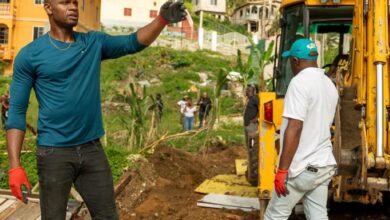Journalism in Latin America: a high risk profession
Mexico and Colombia among countries with more violence

Cases of violence and impunity against journalists are becoming more frequent in Mexico. According to data from the National Citizen Security Observatory, between 2000 and 2016 there were 105 murdered journalists; positioning Mexico in the third place of countries with more crimes against this profession, after Iraq and Afghanistan.
Last year the number of homicides reached the highest number ever with a total of 10 journalists murdered in a period of 9 months. The human rights organization Article 19, which works for the protection of free expression rights, has estimated during 2016 a total of 306 aggressions were registered, which includes threats, physical or mental attacks, intimidation, and deprivation of freedom.
The intimidations are not committed to isolated individuals, but to newspapers through government censorship as well. An example of this is the case of Carmen Aristegui and her team work that were fired after starting an investigation affecting President Enrique Peña Nieto. Most of this violence is said to be related with drug trafficking and political corruption. There is strong evidence of complicity between drug cartels and local politicians for the control of the territories, distribution routs, money laundering and bribes.
The tight relation between criminals and local politicians has led to an increase in the impunity in the investigations of crimes against journalists. The percentage of impunity is 99,7% because of 798 denunciations only 3 cases have been resolved according to the FEADLE. The lack of results from the investigation has generated protests of journalists and family members all over Mexico, demanding progress in the investigations and security measures.
The journalism crisis in Mexico recalls the situation that Colombian journalist lived during the 1980’s when the drug cartels were in their strongest. During that period of time the political violence in Colombia took the life of about 43 people among which were renowned journalists like Jaime Garzón and Guillermo Cano director of the newspaper “El Espectador”. According to the National Historic Memory Center in Colombia there has been 152 journalists assassinated since 1977.
The violence against the communicators in Colombia is related the internal armed conflict. In the South American country, like in Mexico, the attacks come from different fronts. Both right and left political forces, corruption in local politics, drug cartels, paramilitaries and guerrillas have had some involvement in the aggressions.
Today Colombia has reduced those numbers, but violence somehow remains, like impunity in several cases. During 2016 there were about 90 treats and 38 cases of obstruction of journalistic work according to FLIP; positioning Colombia as the second country with more violence towards journalists in Latin America. Impunity have not been eradicated either as expressed by the Interamercian Press Society during the conference N°73 held in April in Guatemala “To express stupefaction and reiterate to the National Attorney General of Colombia to carefully review elements that could serve to reopen the proceedings and to take the necessary measures to prevent them from prescribing other crimes against journalists” they said.
Been a journalists in Latin America has become a high risk profession which involve been exposed to violence and political pressure. Cases like the censorship to press in Venezuela and Ecuador shows that it is getting harder to stay objective and independent of the political and social struggles in order to produce quality content and investigate matters that move sensitive fibers of politicians and criminals. Governments in Latin America must take actions to guarantee the security of journalists and freedom of expression rights.
Latin American Post | Diana Cárdenas
Copy edited by Susana Cicchetto





